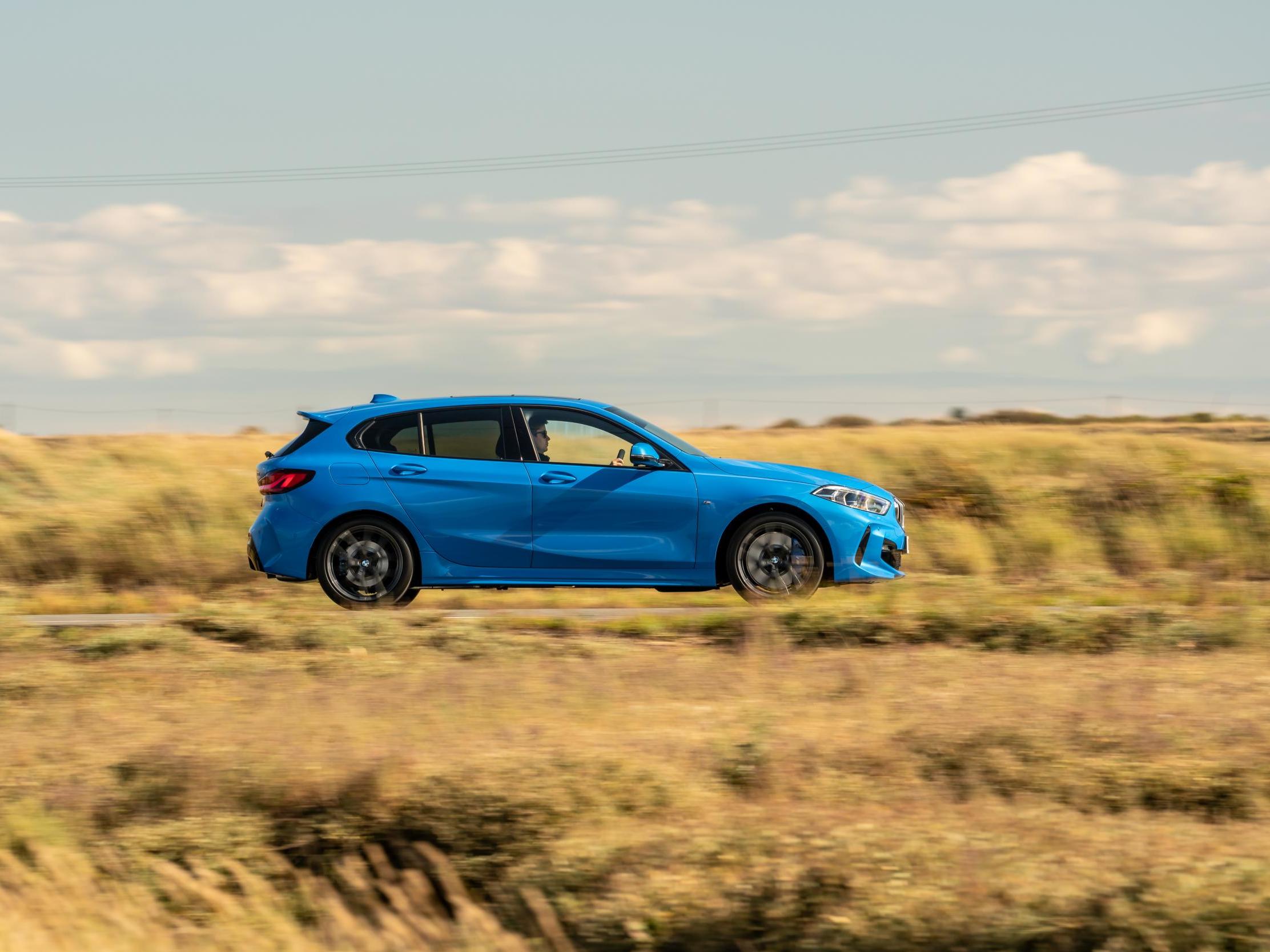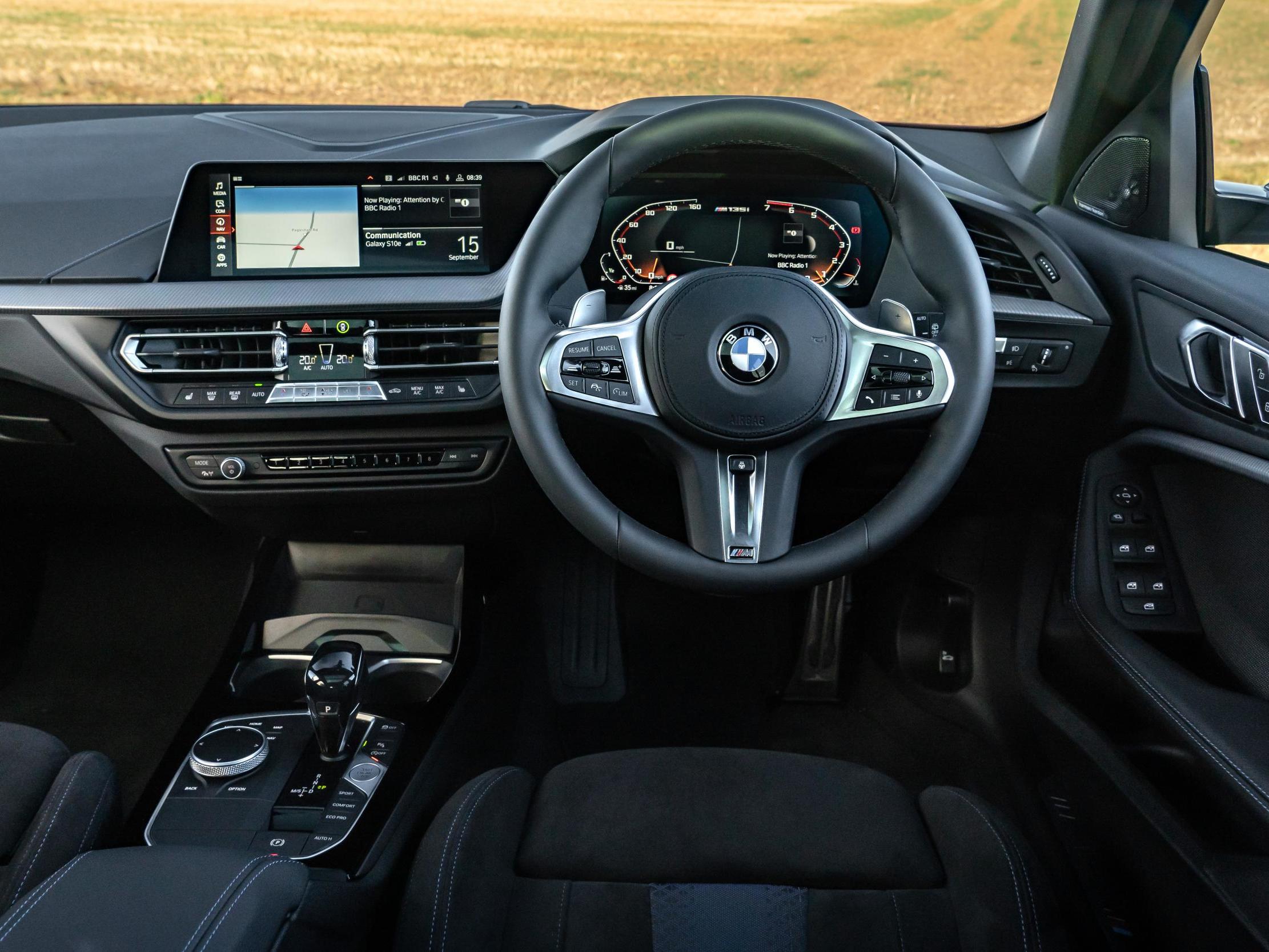BMW 1 Series review: A more composed, distinctive look than its rivals
The familiar lines of the series have been made a bit more muscular

Your support helps us to tell the story
From reproductive rights to climate change to Big Tech, The Independent is on the ground when the story is developing. Whether it's investigating the financials of Elon Musk's pro-Trump PAC or producing our latest documentary, 'The A Word', which shines a light on the American women fighting for reproductive rights, we know how important it is to parse out the facts from the messaging.
At such a critical moment in US history, we need reporters on the ground. Your donation allows us to keep sending journalists to speak to both sides of the story.
The Independent is trusted by Americans across the entire political spectrum. And unlike many other quality news outlets, we choose not to lock Americans out of our reporting and analysis with paywalls. We believe quality journalism should be available to everyone, paid for by those who can afford it.
Your support makes all the difference.The best selling cars in Britain in 2019 will, mostly, not come as much of a surprise to you. In first place, yet again, is the Ford Fiesta. Then, in second, there’s the ubiquitous Volkswagen Golf, followed by its rival the Ford Focus, and then the Vauxhall Corsa (soon to be replaced). And in fifth place? Well, obviously that’s a bit more of a surprise – the Mercedes-Benz A-Class. So that’s what we used to consider a prestige, niche brand opening at the smaller-volume top end of the market – yet here we find it outselling the Nissan Qashqai, Mini and Ford Kuga.
The entry of the premium brands into the mainstream has been one of the more intriguing trends of the past couple of decades, and has made life more difficult for the “volume” or mainstream brands – Ford, Renault, and Vauxhall and so on. The combination of mass sales and the premium price commanded by the German prestige names means big profits.
Hence also the arrival of the new BMW 1 Series as an answer to the recently revamped A-Class and, indeed, the new Audi A3 and (shortly) the VW Golf Mark 8. The BMW is also, in the favoured expression of the carmakers, “all new”, or near enough. The biggest change over the past two generations of 1 Series (the “baby BMW” made its debut back in 2004) is the arrival of front-wheel drive. This was quite a moment for a traditional (though not staid) company such as BMW. For as long as anyone could remember (well, since it stopped making bubble cars a lifetime ago), BMWs were the archetypal conservative design – the engine mounted at the front, and leaving the drive to the rear wheels.
It had been the norm since the Edwardian era. Before cars such as the Citroen Avant, the Mini and Fiat 127 made front-wheel drive both practical and safe, most cars were built on these same simple principles. They were cheaper to make because they were simpler, and they were easier to repair in service. BMW, and Mercedes-Benz, maintained the old traditions well into the 21st century, and still do maintain them for the larger vehicles (some also with new-fangled four-wheel drive of course). The Mercedes A-Class went front-wheel drive long ago; now BMW has followed suit. The small rear-drive car is virtually extinct.
Does is matter? For most drivers, frankly, no, because they’re not much interested in what’s going on with the oily bits. Still, I’ll press on.

Front-wheel drive is safer, but you do need to be getting into trouble before its characteristic fail-safe handling behaviour is needed to keep you out of trouble – rear-drive cars were typically more wayward. If you think about the difference when you push a shopping trolley round a corner in the supermarket, and when you drag it from the front round that same corner, you can see how dragging is a bit more reliable than pushing, in terms of getting the vehicle to go in the desired direction. Front-wheel drive also means the elimination of the transmission tunnel that takes a lot of room out of the passenger compartment, as it directs the power from front to back. Thus, front-drive designs, other things being equal, tend to liberate more space for passengers, or for their luggage or both.
The BMW 1 Series certainly has more room than its predecessors, especially in the boot (plus 20 litres of volume) and within more or less unaltered stereo proportions. Its handling is tidy as well, but then again the effort put into electronic stability control and good suspension meant that the old BMW 10 Series had no real deficiency in that department either.
The spec
BMW 118i M Sport
Price: £35,185 (as tested; range starts at £24,430)
Engine capacity: 1.5-litre petrol 3-cyl, 6-sp manual
Power output (hp@rpm): 155 @ 6,000
Top speed (mph): 132
0 to 60 (seconds): 8.5
Fuel economy (mpg): 49.6
CO2 emissions (WLTP, g/km): 150
The petrol variants of the new 1 Series also make do with the fashionable three-cylinder engine design, a smaller capacity unit – meaning good fuel economy and lower emissions – which is turbocharged so that it can deliver performance when demanded. It works fine but I still have my doubts about the longevity of such a hard-pressed, and highly stressed small power unit.
It is also never going to be as smooth as a conventional four-cylinder engine, because four cylinders are easier to balance than three; so there’s another example of how BMW is leaving some of its principles behind. The two-litre diesels keep the usual four-cylinder configuration. They’re out of fashion, diesels, but if you have to do a high mileage, then they can still make sense, including in environmental terms given how clean the latest designs can be, both on CO2 emissions and diesel particulates. For transmissions you can still specify a six-speed manual change, or a dual clutch or other automatic box.
For the rest, any driver of an old 1 Series or indeed a Mercedes A-Class or A3 driver will be perfectly satisfied with what BMW has done with its compact model updates. The car now boasts the very latest in connectivity; has a full suite of driver aids (albeit usually as extras), and you can specify pretty much any degree of luxury of sportiness your wallet can support. There’s a choice of petrol and diesel options, plus a high-performance derivative, the four-wheel-drive M135i xDrive, and a variety of styling, comfort and gadget packs. This can certainly inflate the price considerably. My test car, one of the small 1.5-litre petrols labelled, a bit confusingly, a 118i, had a list price of £26,155 (reasonable for such a quality product) but which ballooned to £35,000 when it had had some of the desirable packs fitted: not so persuasive at that price.

Styling is always a matter of taste, but to my eye the BMW has a more composed, distinctive look than its Mercedes-Benz rival, which is a touch bland aside from the big imposing grille. BMW has gone about as far as it ought to in oversizing its trademark “kidney” front end, as is the current trend, and the familiar lines of the 1 Series have been made a bit more muscular and wedgey. It’s recognisable as a BMW, still, and should serve the company well (its underpinnings also appear in some sister-brand Minis and the X1 compact SUV). But even though it certainly looks like a BMW, and even drives like one, can a small hatch with a three-cylinder engine and front-wheel drive really be a BMW? Yes, if no one really cares so long as it has the “right” badge on its snout.
Join our commenting forum
Join thought-provoking conversations, follow other Independent readers and see their replies
Comments